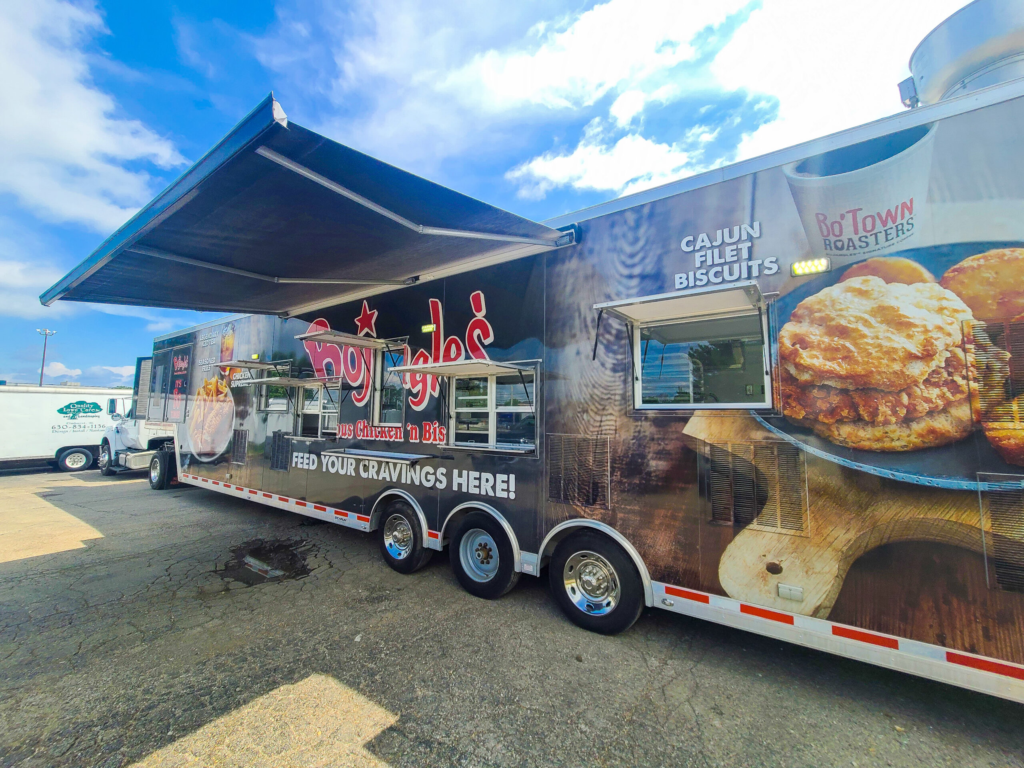
Food trailers have recognized the rising demand for healthier food options and have adapted to cater to health-conscious individuals. Here are some ways in which food trailers have responded to this trend:
- Plant-Based Menu Items: Food trailers now offer a variety of plant-based dishes to accommodate vegetarian and vegan diets. They have incorporated ingredients like tofu, tempeh, seitan, and a wide range of vegetables to create delicious and satisfying options. Plant-based burgers, tacos, wraps, and bowls are some popular choices that cater to the increasing number of people seeking meat-free alternatives.
- Locally-Sourced and Organic Ingredients: Many food trailers have shifted towards using locally-sourced and organic ingredients. By partnering with local farmers and suppliers, they ensure that their menu items are made with fresh, high-quality produce. This emphasis on local and organic ingredients appeals to health-conscious consumers who prioritize sustainable and environmentally-friendly food choices.
- Gluten-Free and Allergen-Friendly Options: Food trailers have recognized the importance of addressing dietary restrictions and allergies. They now offer gluten-free versions of popular items like burgers, sandwiches, and tacos, utilizing gluten-free bread or tortillas. Additionally, they pay attention to other common allergens such as nuts, dairy, and soy, providing alternative ingredients and clearly labeling allergen information on their menus.
- Lighter Cooking Techniques: To reduce the use of excessive oil and unhealthy fats, food trailers have adopted lighter cooking techniques. Grilling, steaming, baking, and air frying are some methods that allow them to create flavorful dishes with reduced fat content. By focusing on healthier cooking methods, food trailers offer options that are lower in calories and saturated fats, appealing to health-conscious individuals.
- Customization and Build-Your-Own Options: Food trailers understand that everyone has different dietary preferences and requirements. To accommodate individual needs, they often provide customization options, allowing customers to build their own meals. This enables people to choose specific ingredients, portion sizes, and sauces, empowering them to create a healthier and personalized meal that aligns with their dietary goals.
- Menu Transparency and Nutritional Information: Recognizing the importance of transparency, food trailers have started providing detailed nutritional information for their menu items. This includes calorie counts, macronutrient breakdowns, and allergen information. By offering this information, customers can make informed decisions about their food choices based on their specific dietary needs and goals.
Through these adaptations, food trailers have successfully embraced the increasing demand for healthier options. They have expanded their menus to include plant-based dishes, sourced quality ingredients, addressed dietary restrictions, and empowered customers to customize their meals. These efforts have made it easier for health-conscious individuals to enjoy street food while maintaining their desired dietary habits.

Are there any specific cooking techniques that food trailers commonly use to reduce fat content?
Yes, food trailers often employ cooking techniques that help reduce fat content in their dishes. Here are a few commonly used methods:
- Grilling: Grilling is a popular cooking technique used by food trailers to reduce the need for excessive oil. It involves cooking food on a hot grill, allowing excess fat to drip away while imparting a smoky flavor. Grilled items like vegetables, lean meats, and seafood are flavorful and lower in fat compared to deep-fried alternatives.
- Steaming: Steaming is a gentle cooking method that uses hot steam to cook food. It helps retain the natural flavors, colors, and nutrients while minimizing the need for added fats. Food trailers might steam vegetables, dumplings, buns, or even fish to create healthier options with reduced fat content.
- Baking: Baking involves cooking food in an oven using dry heat. It is a versatile technique used by food trailers to create healthier versions of dishes that are typically deep-fried. For example, instead of deep-frying chicken wings, they may opt to bake them, resulting in a crispy texture with less added fat.
- Air Frying: Air frying has gained popularity in recent years as a healthier alternative to deep frying. Food trailers may utilize air fryers, which use hot air circulation to cook food, requiring little to no oil. This technique produces crispy results similar to deep frying but with significantly reduced fat content.
- Stir-Frying: Stir-frying is a quick and high-heat cooking method that requires minimal oil. Food trailers can use this technique to cook a variety of ingredients, such as vegetables, lean proteins, and tofu. By using a small amount of oil and constantly stirring the food, they can achieve a flavorful dish with less fat.
- Poaching: Poaching involves gently simmering food in liquid, typically water or broth. This cooking method is commonly used for cooking proteins like chicken, fish, or eggs. Poaching allows food to retain its moisture and flavor without the need for added fats.

